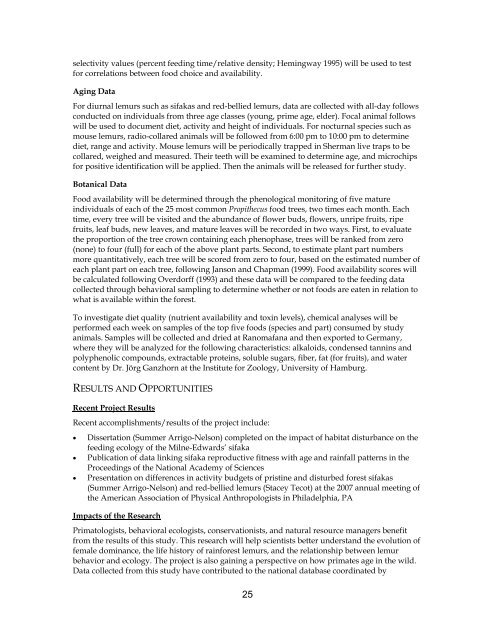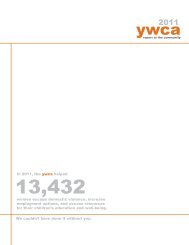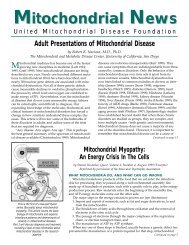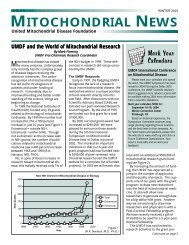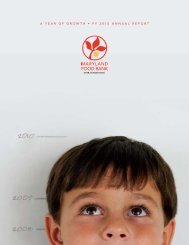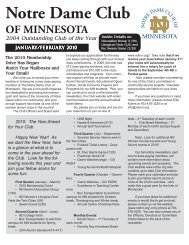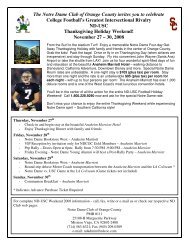Madagascar's Lemurs
Madagascar's Lemurs
Madagascar's Lemurs
You also want an ePaper? Increase the reach of your titles
YUMPU automatically turns print PDFs into web optimized ePapers that Google loves.
selectivity values (percent feeding time/relative density; Hemingway 1995) will be used to test<br />
for correlations between food choice and availability.<br />
Aging Data<br />
For diurnal lemurs such as sifakas and red-bellied lemurs, data are collected with all-day follows<br />
conducted on individuals from three age classes (young, prime age, elder). Focal animal follows<br />
will be used to document diet, activity and height of individuals. For nocturnal species such as<br />
mouse lemurs, radio-collared animals will be followed from 6:00 pm to 10:00 pm to determine<br />
diet, range and activity. Mouse lemurs will be periodically trapped in Sherman live traps to be<br />
collared, weighed and measured. Their teeth will be examined to determine age, and microchips<br />
for positive identification will be applied. Then the animals will be released for further study.<br />
Botanical Data<br />
Food availability will be determined through the phenological monitoring of five mature<br />
individuals of each of the 25 most common Propithecus food trees, two times each month. Each<br />
time, every tree will be visited and the abundance of flower buds, flowers, unripe fruits, ripe<br />
fruits, leaf buds, new leaves, and mature leaves will be recorded in two ways. First, to evaluate<br />
the proportion of the tree crown containing each phenophase, trees will be ranked from zero<br />
(none) to four (full) for each of the above plant parts. Second, to estimate plant part numbers<br />
more quantitatively, each tree will be scored from zero to four, based on the estimated number of<br />
each plant part on each tree, following Janson and Chapman (1999). Food availability scores will<br />
be calculated following Overdorff (1993) and these data will be compared to the feeding data<br />
collected through behavioral sampling to determine whether or not foods are eaten in relation to<br />
what is available within the forest.<br />
To investigate diet quality (nutrient availability and toxin levels), chemical analyses will be<br />
performed each week on samples of the top five foods (species and part) consumed by study<br />
animals. Samples will be collected and dried at Ranomafana and then exported to Germany,<br />
where they will be analyzed for the following characteristics: alkaloids, condensed tannins and<br />
polyphenolic compounds, extractable proteins, soluble sugars, fiber, fat (for fruits), and water<br />
content by Dr. Jörg Ganzhorn at the Institute for Zoology, University of Hamburg.<br />
RESULTS AND OPPORTUNITIES<br />
Recent Project Results<br />
Recent accomplishments/results of the project include:<br />
• Dissertation (Summer Arrigo-Nelson) completed on the impact of habitat disturbance on the<br />
feeding ecology of the Milne-Edwards’ sifaka<br />
• Publication of data linking sifaka reproductive fitness with age and rainfall patterns in the<br />
Proceedings of the National Academy of Sciences<br />
• Presentation on differences in activity budgets of pristine and disturbed forest sifakas<br />
(Summer Arrigo-Nelson) and red-bellied lemurs (Stacey Tecot) at the 2007 annual meeting of<br />
the American Association of Physical Anthropologists in Philadelphia, PA<br />
Impacts of the Research<br />
Primatologists, behavioral ecologists, conservationists, and natural resource managers benefit<br />
from the results of this study. This research will help scientists better understand the evolution of<br />
female dominance, the life history of rainforest lemurs, and the relationship between lemur<br />
behavior and ecology. The project is also gaining a perspective on how primates age in the wild.<br />
Data collected from this study have contributed to the national database coordinated by<br />
25


